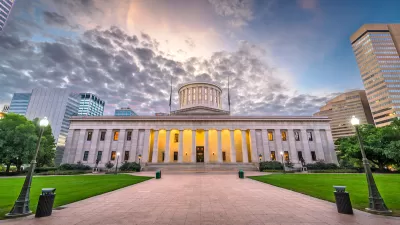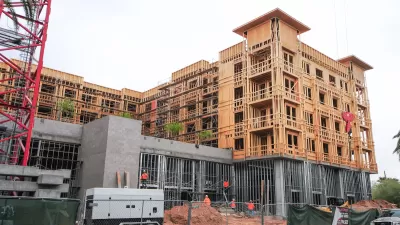It's clear that New Jersey’s economic development planners didn't spend much time thinking about opportunity costs when they approved $1.1 billion in tax incentives under the Grow NJ program.

Camden is one of the most distressed cities in the United States, and if any city needs state help to build its economy, it’s Camden. While the state of New Jersey has responded, the way it has done so adds up to one of the most egregious examples of misuse of economic development incentives in recent memory. At the same time, it offers some useful lessons for thinking about urban economic development, especially about a concept that people working in this field don’t think about enough—opportunity costs.
New Jersey has created what it calls the Grow NJ program, a suite of incentives to encourage corporations to move into or stay in the state. It targets certain areas, with the most generous incentives offered for companies to stay in or move to the state’s four poorest major cities: Camden, Trenton, Paterson, and Passaic. So far so good.
Under this program, New Jersey has given out $1.1 billion in tax incentives to 16 companies in the city of Camden since late 2013. Five account for $900 million of this total, as shown in the table below. All are major, well-heeled corporations. With the exception of EMR, which is a scrap metal facility already located in Camden, all of the companies were already operating in nearby suburbs. The businesses are being paid nearly $400,000 per job, on average, to move operations 5 or 10 miles into new buildings in Camden, along with creating a few additional jobs once the companies relocate.
What’s wrong with this picture?
FULL STORY: How *Not* To Do Economic Development

Planetizen Federal Action Tracker
A weekly monitor of how Trump’s orders and actions are impacting planners and planning in America.

Maui's Vacation Rental Debate Turns Ugly
Verbal attacks, misinformation campaigns and fistfights plague a high-stakes debate to convert thousands of vacation rentals into long-term housing.

San Francisco Suspends Traffic Calming Amidst Record Deaths
Citing “a challenging fiscal landscape,” the city will cease the program on the heels of 42 traffic deaths, including 24 pedestrians.

Defunct Pittsburgh Power Plant to Become Residential Tower
A decommissioned steam heat plant will be redeveloped into almost 100 affordable housing units.

Trump Prompts Restructuring of Transportation Research Board in “Unprecedented Overreach”
The TRB has eliminated more than half of its committees including those focused on climate, equity, and cities.

Amtrak Rolls Out New Orleans to Alabama “Mardi Gras” Train
The new service will operate morning and evening departures between Mobile and New Orleans.
Urban Design for Planners 1: Software Tools
This six-course series explores essential urban design concepts using open source software and equips planners with the tools they need to participate fully in the urban design process.
Planning for Universal Design
Learn the tools for implementing Universal Design in planning regulations.
Heyer Gruel & Associates PA
JM Goldson LLC
Custer County Colorado
City of Camden Redevelopment Agency
City of Astoria
Transportation Research & Education Center (TREC) at Portland State University
Jefferson Parish Government
Camden Redevelopment Agency
City of Claremont





























